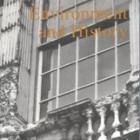Hipkins, S., and S. F. Watts. “Estimates of Air Pollution in York: 1381–1891.” Environment and History 2, no. 3 (Oct., 1996): 337–45. doi:10.3197/096734096779522329. Plume dispersion modelling has been used to estimate the smoke and sulphur dioxide concentrations for historic York in five individual years, 1381, 1672, 1841, 1851, and 1891. Historical data concerning population, housing, industrial distribution, fuel imports and exports have been used to generate a source matrix for sulphur dioxide and smoke for the model. The general levels of pollutants implied by the results seem to be consistent with changes in York over the time-span studied. Maximum annual average sulphur dioxide concentrations (in central York) range between 10 and 120 mgm3 (1672 and 1861 respectively), and for smoke between 5 and 40 mgm-3 (1381 and 1861 respectively). The main sources of uncertaintity are implicit in the quality of the data set, which in this case due to certain peculiarities of York record keeping is thought to be good. Sensitivity analyses indicates that because the results of this model are estimates of annual average concentrations, they are likely to be relatively insensitive to changes of up to 20% in up to 15% of the source matrix providing the distribution of the errors in the historical data is random. All rights reserved. © 1996 The White Horse Press
"Estimates of Air Pollution in York: 1381–1891"
Hipkins, S., and S. F. Watts | from Multimedia Library Collection:
Environment and History (journal)


